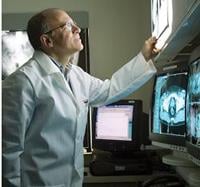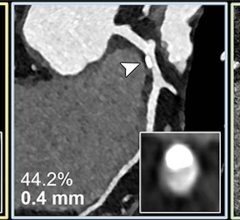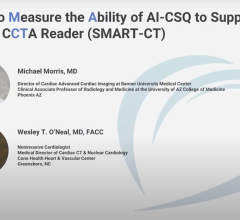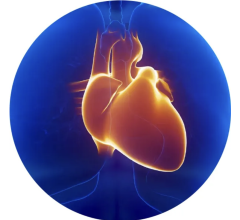
August 29, 2011 – Stroke patients who need emergency care should be taken to the nearest certified primary stroke center, which acts as a central point for stroke treatment, according to recommendations from the Brain Attack Coalition (BAC), a group representing medical, scientific, nonprofit and government leaders in the field of stroke. The recommendations, which reflect advances in stroke treatment over the past decade, are published online in the September issue of the journal Stroke.
The recommendations also include the option of using magnetic resonance imaging (MRI) of the brain in lieu of computed tomography (CT) if it can be performed within 25 minutes of being ordered, the current time standard for CT. The authors also recommend heart imaging, since strokes are often caused by blood clots from the heart, and two new techniques for imaging the blood vessels in and around the brain that may cause a stroke.
At least 1,000 U.S. hospitals are designated as primary stroke centers (PSCs), a trend that has improved the care and treatment of acute stroke patients across the United States. The concept of PSCs arose from a need to provide rapid, uniform, evidence-based treatment to all stroke patients. This concept was further supported following U.S. Food and Drug Administration (FDA) approval in 1995 of the first treatment for acute stroke, the clot-busting drug t-PA.
Stroke is the fourth leading cause of death in the United States and the leading cause of serious long-term disability in adults. There are more than 795,000 new or recurring strokes each year, at a cost exceeding $73 billion.
"As PSCs have grown, we have seen a number of benefits for stroke patients. More are getting rapid diagnoses and appropriate treatments as quickly as possible. Stroke care is better organized, and quality of care has improved substantially. These benefits are very much in keeping with the Brain Attack Coalition's mission of preventing and combating stroke," said Walter Koroshetz, M.D., deputy director of the National Institutes of Health’s National Institute of Neurological Disorders and Stroke (NINDS), a member of the BAC.
The new BAC recommendations recognize substantial changes in the diagnosis and treatment of stroke patients over the past decade, particularly advances in brain and imaging techniques, the development of stroke teams and stroke units and evidence supporting the importance of early initiation of rehabilitation therapy.
"Many hospitals have benefited and will continue to benefit from certification as primary stroke centers. Even more importantly, the patients cared for at PSCs have clearly benefited by getting better treatment, experiencing fewer complications and going home from the hospital sooner. As a coalition of stroke professionals, we feel an imperative to help improve and further develop this important link in the chain of stroke recovery," said Mark J. Alberts, M.D., director of the Stroke Center at the Northwestern University Feinberg School of Medicine in Chicago and lead author of the paper.
The authors built the new clinical recommendations from an extensive literature search. A fact sheet summarizing the recommendations is available.
Since its creation in 1994, the BAC has led several important collaborative initiatives including publication of a paper on the establishment of comprehensive stroke centers, designed to offer a higher level of stroke care; agreement on a uniform presentation of stroke symptom messaging; and the development of a new public education message to get more patients to seek immediate treatment.
The initial BAC recommendations for establishing PSCs were published in the Journal of the American Medical Association in March 2000. These prompted the American Heart Association/American Stroke Association to partner with the Joint Commission, an independent body that accredits health care centers and hospitals, to develop a system to recognize and certify certain hospitals as PSCs. The Joint Commission has now certified more than 800 PSCs. The federally authorized Healthcare Facilities Accreditation Program and various state agencies have certified several hundred more PSCs.
Members of the Brain Attack Coalition are: the American Academy of Neurology; American Association of Neurological Surgeons; American Association of Neuroscience Nurses; American College of Emergency Physicians; American Heart Association/American Stroke Association; American Society of Neuroradiology; Centers for Disease Control and Prevention; Congress of Neurological Surgeons; Department of Veterans Affairs; National Association of Chronic Disease Directors; National Association of EMS Physicians; National Association of State EMS Officials; National Institute of Neurological Disorders and Stroke; National Stroke Association; Neurocritical Care Society; Society of NeuroInterventional Surgery; and the Stroke Belt Consortium.
NINDS is the nation’s leading funder of research on the brain and nervous system. The NINDS mission is to reduce the burden of neurological disease — a burden borne by every age group, by every segment of society, by people all over the world.
About the National Institutes of Health (NIH): NIH, the nation's medical research agency, includes 27 Institutes and Centers and is a component of the U.S. Department of Health and Human Services. NIH is the primary federal agency conducting and supporting basic, clinical and translational medical research, and is investigating the causes, treatments and cures for both common and rare diseases.
For more information: www.nih.gov


 April 22, 2024
April 22, 2024 








